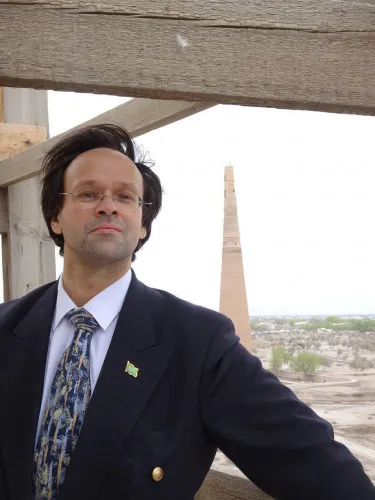
As part of the upcoming International Media Forum of the Cultural Legacy of Uzbekistan in the World Collections project, a presentation of a project to restore the method of manufacturing medieval glaze and the revival of the traditional blue ceramics of Bukhara will take place.
The secrets of the unique method will be shared with the guests of the event by the project manager, a special researcher at the Miho Museum (Japan), an archaeologist and historian who has studied the history of glaze in Central Asia, Iran, Turkey, a participant in archaeological and restoration projects in Turkmenistan, Cambodia, Laos and other countries, Sergey Lapteff.
Of the monuments of the medieval period located in Uzbekistan, first of all, the attention of scholars and the general public is attracted by the creations of Islamic architecture - the mosques and mausoleums of Samarkand, Bukhara, Khiva and other cities in the heart of the Silk Road. Most of them are lined with glazed brick, typical of the Islamic architecture of Central Asia and Iran.
However, the secret of making medieval glaze was lost long ago; the methods that are used in modern facing of architectural objects during the restoration of monuments differ significantly from the methods of traditional craftsmen, do not provide the desired color and durability, and, accordingly, are not suitable for architectural restoration. In the same way, they do not solve the issue of the need to transfer knowledge from generation to generation, the traditional wisdom of the ancestors of the Uzbek people.
The main technical problem is the complexity of creating a glaze - durable, from natural plant materials, the so-called ishkor. Ishkor glaze is closely connected with the art of traditional Uzbek ceramics, another pride of the Uzbek usto (craftsmen). Unfortunately, the laboriousness and complexity of the process has recently forced the vast majority of ceramists to abandon the use of ishkor and switch to chemical glaze.
The restoration of the traditions of ishkor glaze and traditional ceramics of Bukhara is carried out by a group of scholars, architects-restorers and ceramists headed by Sergey Lapteff. During the forum, they will tell the participants about the results of their work.
